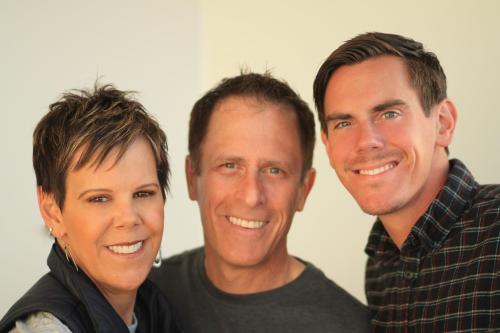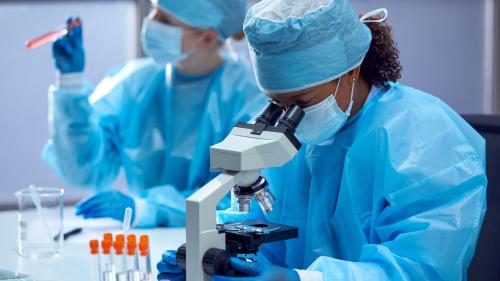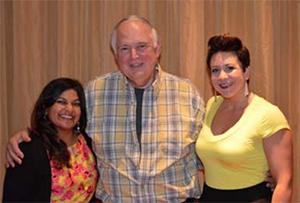
-
Understanding primary immunodeficiency (PI)

Understanding PI
The more you understand about primary immunodeficiency (PI), the better you can live with the disease or support others in your life with PI. Learn more about PI, including the various diagnoses and treatment options.
-
Living with PI
-
Addressing mental health
-
Explaining your diagnosis
- General care
- Get support
- For parents and guardians
-
Managing workplace issues
- Navigating insurance
-
Traveling safely

Living with PI
Living with primary immunodeficiency (PI) can be challenging, but you’re not alone—many people with PI lead full and active lives. With the right support and resources, you can, too.
-
Addressing mental health
-
Get involved

Get involved
Be a hero for those with PI. Change lives by promoting primary immunodeficiency (PI) awareness and taking action in your community through advocacy, donating, volunteering, or fundraising.
-
Advancing research and clinical care
-
Research Grant Program
-
Consulting immunologist
-
Diagnosing PI
-
Getting prior authorization
-
Clinician education
-
Survey research
-
Participating in clinical trials

Advancing research and clinical care
Whether you’re a clinician, researcher, or an individual with primary immunodeficiency (PI), IDF has resources to help you advance the field. Get details on surveys, grants, and clinical trials.
-
Research Grant Program
Gene therapy for severe combined immunodeficiency (SCID)—how does it compare to stem cell transplantation, how does it work, and what are the most recent outcomes in clinical trials?
In the March SCID Compass Lunch & Learn, Dr. Donald B. Kohn addressed these questions in his presentation, “Gene Therapy for PIDs – Past, Present, Future.” Kohn is a University of California, Los Angeles Distinguished Professor of Microbiology, Immunology & Molecular Genetics and Pediatrics, Division of Hematology/Oncology, and Director of the UCLA Human Gene and Cell Therapy Program.
Kohn explained why researchers are exploring gene therapy for SCID and other rare genetic conditions in clinical trials by drawing comparisons between HSCT and gene therapy.
The accepted treatment for SCID is hematopoietic stem cell transplant (HSCT). In HSCT, the baby receives donor stem cells which establish an immune system for the child. While HSCT provides babies with a functioning immune system, it often leads to other health problems, especially if a baby does not have a matched sibling donor.
“The reason we’re talking about gene therapy and why it’s an option for diseases is that HSCT has complications of graft versus host disease (GVHD). It’s a major limitation to HSCT, the unwanted immune response that occurs between the patient and the transplanted cells. The donor T cells come along in the marrow, and the graft can react to the new body, the recipient. That’s GVHD, so we have to give immune suppression to get that under control,” said Kohn.
Gene therapy, on the other hand, offers the same benefits of HSCT without the GVHD complications. In gene therapy, the stem cell donor is the baby him or herself. Doctors take some of the baby’s stem cells, correct the abnormal gene in the stem cells, and put the corrected stem cells back into the baby where they multiply and build an immune system.
“The hypothesis for gene therapy is that using the patient's own hematopoietic stem cells, which would then be autologous, that are corrected with the normal gene, can have the same beneficial effects as a transplant from a donor without the immune complications of another person's stem cells,” said Kohn.
The general steps in gene therapy are as follows:
- Doctors collect a small fraction of the patient’s stem cells through an IV for about 3-4 hours or from a bone marrow harvest while the child is asleep.
- Researchers add the virus particle containing the corrected gene to the stem cells.
- The virus particles bind to the cell’s surface and inject their genetic information into the chromosome of the cell, which provides the stem cell with the new gene.
- The stem cells containing the new gene are transfused back into the child.
While gene therapy offers advantages over HSCT, it has resulted in complications for patients during clinical trials. In the early 2000s, six of a group of 20 persons with SCID treated with gene therapy developed leukemia. Researchers determined that the vector, or virus, which contained the corrected gene and was inserted into the stem cells activated nearby cells and caused leukemia. The field of gene therapy was put on hold.
As a result of those trials, researchers now use a different vector that doesn’t have an enhancer like the old vector and instead has an internal promoter.
“And so we’re now in the lentivirus vector era, using newer viruses. Trials have been done using these second-generation vectors, and immune reconstitution has been achieved for patients with at least six diseases,” said Kohn.
A recent case of leukemia did develop in a person with sickle cell in the new trials, but the company producing the gene therapy recently stated that they don’t think that the vector caused cancer.
“The viruses are relatively safe,” said Kohn.
Genetic disorders treated with gene therapy in clinical trials during recent years include ADA-SCID, X-linked SCID, Artemis SCID, X-linked chronic granulomatous disease (CGD), Wiskott-Aldrich syndrome (WAS), and leukocyte adhesion deficiency (LAD) in the United States and Canada.
In a research study using lentiviral gene therapy to treat ADA-SCID in 50 persons, the survival rate was 100 percent three to five years out from the study, and only two people did not experience immune reconstitution.
“So, it’s 96 percent success rate. It’s not perfect, but we think it’s quite good,” said Kohn.
“Autologous transplants of gene-corrected stem cells for ADA-SCID have been safe and effective, and these new vectors that showed improved safety profiles are in clinical trials for X SCID, ADA-SCID, ART SCID, WAS, CGD, LAD.
“And in all those trials, they’ve shown good benefits for fixing the immune system, and there have been no vector-related complications. This is probably 150 patients or so, which include 50 or 60 ADA SCIDs.”
These are some other forms of SCID and other PIs for which there is research in the laboratory moving toward the clinic:
- Rag 1 SCID.
- IL7Ralpha SCID.
- Hemophagocytic lymphohistiocytosis (HLH with perforin gene mutation).
- Immune dysregulation, polyendocrinopathy, enteropathy, X-linked syndrome (IPEX).
- X-linked immunodeficiency with hyper-IgM (XHIM).
- X-linked agammaglobulinemia (XLA).
- DOCK8 deficiency.
Research for gene editing is also taking place in clinical trials for other forms of PI. In gene editing, if a person has a mutation in a gene, rather than adding a normal, or corrected, copy of the gene, researchers actually fix the mutation. Enzymes cut a person’s DNA at the site right next to the mutation.
“When cells get their DNA cut, they freak out; they call the paramedics. They very quickly try and fix it. And if you give them a piece of DNA that matches the cut site but has the normal base instead of the mutation, the cell can use that to fix the break and incorporate the normal base. So that's what gene editing is about,” explained Kohn.
Though gene therapy is a promising treatment, it’s not as flexible as HSCT. HSCT can be used to treat various conditions, whereas gene therapy requires an incredible amount of work to prepare a treatment protocol for each different condition.
“Gene therapy requires development of a specific treatment for each genotype, so ADA SCID, X SCID, RAG 1, each is a whole project to develop the virus for it, to do the safety testing, the clinical trials, and so it will become an issue of the cost and time to develop these for the ultra-rare. It’s a challenge,” said Kohn.
“Additionally, the risks from gene manipulation will need to outweigh the risks from graft versus host disease and immune suppression. Ultimately, the most clinically and cost-effective approaches will prevail.”
This page contains general medical and/or legal information that cannot be applied safely to any individual case. Medical and/or legal knowledge and practice can change rapidly. Therefore, this page should not be used as a substitute for professional medical and/or legal advice. Additionally, links to other resources and websites are shared for informational purposes only and should not be considered an endorsement by the Immune Deficiency Foundation.
Sign up for updates from IDF
Receive news and helpful resources to your cell phone or inbox. You can change or cancel your subscription at any time.





The Immune Deficiency Foundation improves the diagnosis, treatment, and quality of life for every person affected by primary immunodeficiency.
We foster a community that is connected, engaged, and empowered through advocacy, education, and research.
Combined Charity Campaign | CFC# 66309




